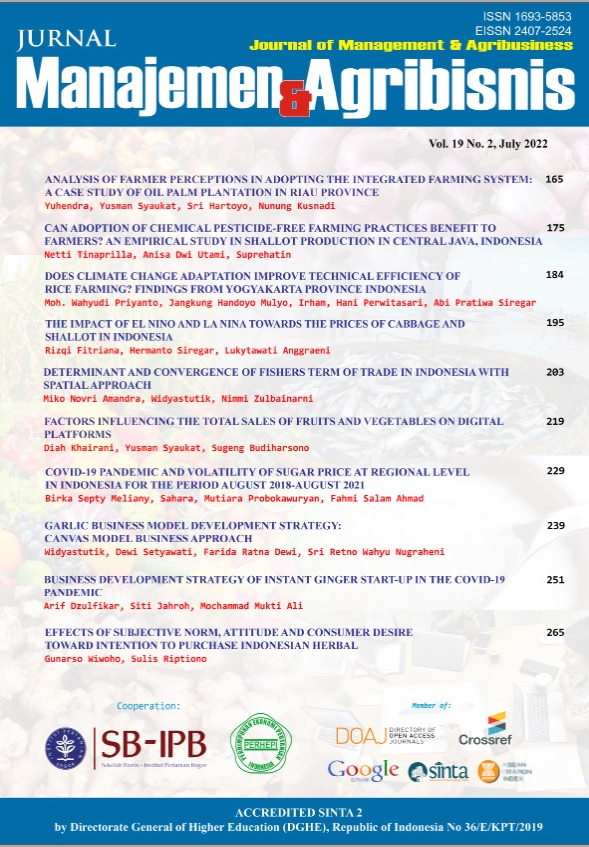Garlic Business Model Development Strategy: Canvas Model Business Approach
Abstract
Garlic is one of the commodities developed in the country as an effort to achieve self-sufficiency and reduce imports. This study aims to identify the existing business models in the garlic production centers and develop garlic ideal business models using Business Model Canvas (BMC) approach. The others purpose is to identify the critical points of existing business models and formulate policy recommendations for developing garlic business models to support production. The study used primary and secondary data. The primary data was obtained from a survey conducted in 2021 at garlic production centers with purposive sampling methods such as Karanganyar Regency, Boyolali Regency, and Magelang Regency. The analysis shows that key partner elements, customer segments, and channels are the critical point. Thus, to develop the garlic business model, it is necessary to carry out synergy and collaboration of stakeholders (key partners) to overcome critical activities, essential resources, customer segments, partnerships, channels, and value co-creation. As a result, it will improve garlic farmers' cost structure and revenue stream, so garlic production can increase to meet domestic needs.
Keywords: bmc element, business model canvas, collaboration, garlic, synergy
Authors
Authors who publish with this journal agree to the following terms:
- Authors retain copyright and grant the journal right of first publication with the work simultaneously licensed under a Creative Commons Attribution License that allows others to share the work with an acknowledgement of the work's authorship and initial publication in this journal.
- Authors are able to enter into separate, additional contractual arrangements for the non-exclusive distribution of the journal's published version of the work (e.g., post it to an institutional repository or publish it in a book), with an acknowledgement of its initial publication in this journal.
- Authors are permitted and encouraged to post their work online (e.g., in institutional repositories or on their website) prior to and during the submission process, as it can lead to productive exchanges, as well as earlier and greater citation of published work (See The Effect of Open Access).

